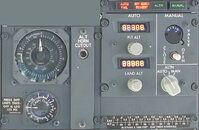I'm not seeking the answer to the original question. Calling DAN is ONE logical source for the correct answer. Look back at a couple of post and you'll see that I also mention other options.
Post 105 is a good place to start as any I suppose. I think this is a good example over the disagreement. Thalassamania's post clearly shows a disagreement with Mempilot in regards to the answer of the original question.
You seem to be confused about what was the original question. It was (actually there were two but this is the one everyone is discussing): "However, is it possible for this rule to be reduced or are there other guidelines for people who are only diving very shallow? As I mentioned, the pool is only 10 ft deep, so obviously it is a very shallow dive."
There is nothing in post 105 or any other post where anyone answered that the standard no-fly time is not possible to be reduced after a pool dive or that it is unsafe to fly after a pool dive.
Both Thal and Mem have stated that flying after a pool dive is Ok. There is no disagreement there. Thal and Mem are disagreeing over full saturation levels and depths, which was not part of the original question.






